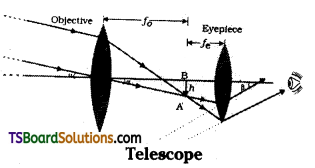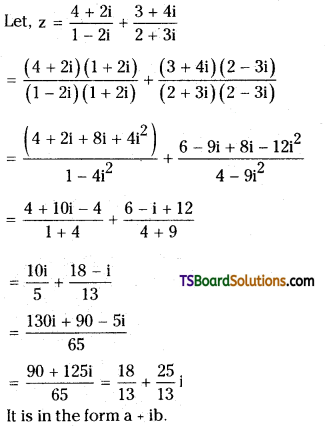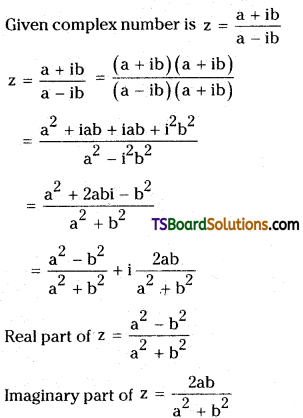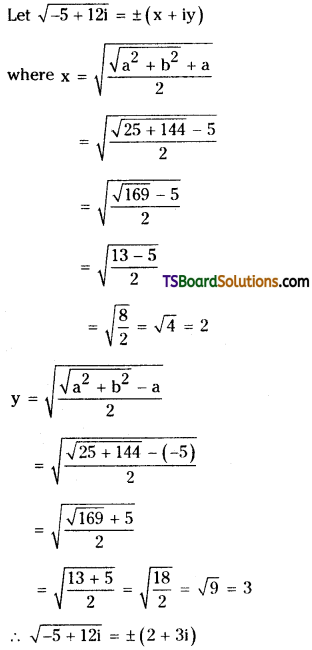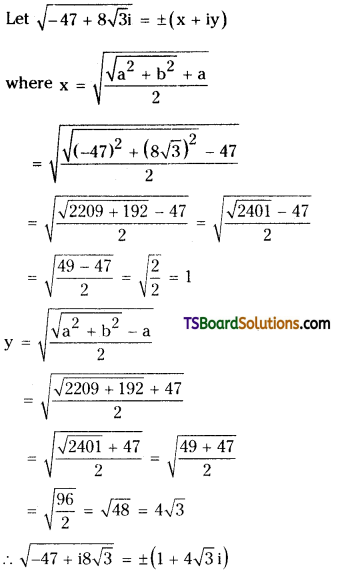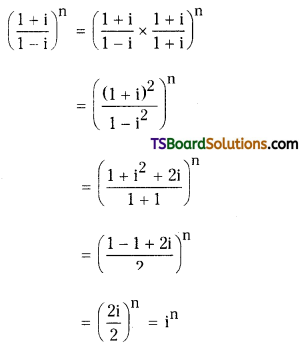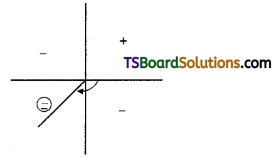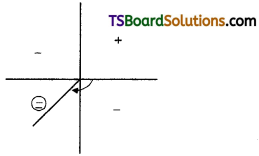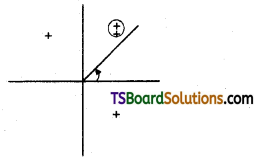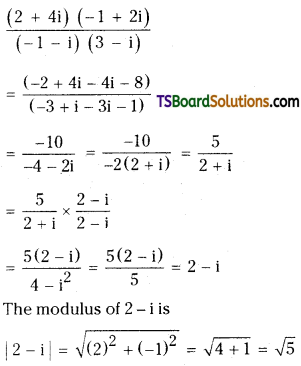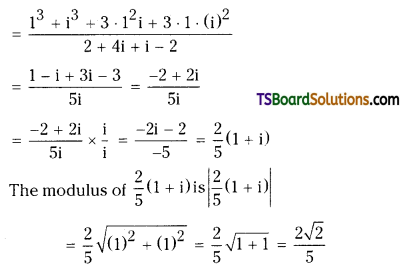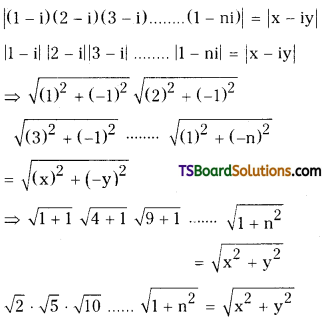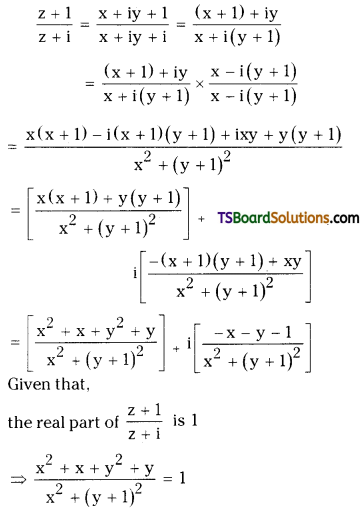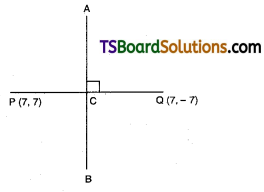Here students can locate TS Inter 2nd Year Physics Notes 4th Lesson Electric Charges and Fields to prepare for their exam.
TS Inter 2nd Year Physics Notes 4th Lesson Electric Charges and Fields
→ Electrical charges given to conductors will flow from one end to other end. Charges moving through conductors leads to flow of current.
→ Electrical charges are two types
- positive charge,
- negative charge.
→ In the process of electrification we will remove or add electrons to substances with some techniques. Substance that looses electrons will become positive substance that gains electrons will become negative.
→ Quantisation of charge: Electric charge ‘Q ’ on a substance is an integral multiple of fundamental charge of electron, i.e., Q = ne. It is called Quantisation of charge.
→ Law of conservation of charge : The total charge of an isolated system is always con-stant. i.e., charge can not be created or des-troyed. This is known as “law of conservation of charge”.
→ Charge on electron e = 1.602 × 10-19 C it is taken as fundamental charge.
→ Coulomb’s Law:
Force attraction (or) repulsion between the charges is proportional to product of charges and inversely proportional to the square of the distance between them.
∴ From Coulomb’s law F ∝ q1q2 and F ∝ 1/r2
F ∝ \(\frac{q_1 q_2}{r^2}\) (OR) F = \(\frac{1}{4 \pi \varepsilon_0} \frac{q_1 q_2}{r^2}\)
Where \(\frac{1}{4 \pi \varepsilon_0}\) = 9 × 109 N-m2 / C2 is a constant.
ε0 is permittivity of free space.
Its value is 8.85 × 10-12 farad/metre.
→ Force on a given charge (q) due to multiple charges is the vector sum of all the forces acting on the given charge.
\(\overline{\mathrm{F}_{\mathrm{R}}}=\overline{\mathrm{F}}_1+\overline{\mathrm{F}}_2+\overline{\mathrm{F}}_3\) ……….
Where F1 = \(\frac{1}{4 \pi \varepsilon_0} \frac{q^q q_2}{r_1^2}\) etc
Note : To find resultant force we must use principles of vector addition i.e., parallelogram law or triangle law.
→ Electric field : Every charged particle (q) will produce an electric field everywhere in the surrounding. It is a vector. It follows inverse square law.
![]()
→ Intensity of electric field (or) electric field strength (E̅) : Intensity of electric field or electric field at a point in space is the force experienced by a unit positive charge placed at that point.
F = Eq (or) E = (F/q), SI unit: Vm-1
→ Electric field lines of force : Electric field lines represent electric field E due to a charge ‘q’ in a pictorial manner. When E is strong field lines are move nearer or crowded. In a weak field electric field lines are less dense.
→ Electric flux (Φ): The number of electric field line passing through unit area placed normal to the field at a given point is called “electric flux”. It is a measure for the strength of electric field at that point.
→ Electric dipole: Two equal and opposite charges separated by some distance will constitute an “electric dipole”.
![]()
→ Dipole moment (p̅): The product of one of the charge in dipole and separation between the charges is defined as “dipole moment (P̅)”.
Dipole moment (p̅) = q. 2a (or) p = 2aq
It is a vector. It acts along the direction of -q to q.
Unit: coulomb – metre.
→ Dipole in a uniform electric field : Let an electric dipole is placed in an electric field of intensity E. Then F = Eq
Torque on dipole τ = p̅ x E̅
Let p̅ and E̅ are in the plane of the paper then torque τ will act perpendicularly to the plane of the paper.
→ Linear charge density (λ) :
It is defined as the ratio of charge (Q) to length of the conductor (L).
Linear charge density
λ = \(\frac{\text { Charge }}{\text { Length }} \frac{(\mathrm{Q})}{(\mathrm{L})}\)
⇒ λ = \(\frac{\Delta \mathrm{Q}}{\Delta \mathrm{L}}\)
Unit: Coulomb / metre.
→ Surface charge density (σ) : W
It is defined as the ratio of charge (Q) to surface area of (A) of that conductor.
Surface charge density
σ = \(\frac{\text { Charge }}{\text { Area }} \frac{(\mathrm{Q})}{(\mathrm{A})}\)
⇒ σ = \(\frac{\Delta \mathrm{Q}}{\Delta \mathrm{A}}\)
Unit: Coulomb / metre2
→ Volume charge density (ρ):
It is defined as the ratio of charge on the conductor ‘Q’ to volume of the conductor.
Volume charge density
ρ = \(\frac{\text { Charge }}{\text { Volume }} \frac{(Q)}{(V)}\)
⇒ ρ = \(\frac{\Delta \mathrm{Q}}{\Delta \mathrm{V}}\)
Unit: Coulomb / m3.
→ Gauss law : The total electrical flux (Φ) through a closed surface (s) is 1/ε0 times more than the total charge (Q) enclosed by that surface.
From Gauss law (Φ) = \(\frac{1}{\varepsilon_0}\) Q
→ Important conclusions from Gauss’s law:
- Gauss law is applicable to any closed surface irrespective of its shape.
- The term Q refers to sum of all the charges inside the gaussian surface.
- A gaussian surface is that surface for which we choosed to apply gauss law.
- It is not necessary to consider any charges out side the gaussian surface to find the flux (Φ) coming out of it.
- Gauss law is very useful in the calculations to find electric field when the system (gaussian surface) has some symmetry.
![]()
→ Charge Q = ne. Where e = charge on electron = 1.6 × 10-19 C.
→ Force between two charges F = \(\frac{1}{4 \pi \varepsilon_0} \frac{q_1 q_2}{r^2}\)
→ Force between multiple charges : In a system of charges say q1 q2, q3 ………. qn.
Force on charge qj is say F1 = F12 + F13 + F14 ………….. F1n
(OR) Total force on q1 say
F1 = \(\frac{1}{4 \pi \varepsilon_0}\left[\frac{q_1 q_2}{r_{21}^2}+\frac{q_1 q_3}{r_{13}^2}+\ldots . .+\frac{q_1 q_n}{r_{1 n}^2}\right]\)
→ Electric field due to a point charge q’ at a point r is E = \(\frac{1}{4 \pi \varepsilon_0} \frac{\mathrm{Q}}{\mathrm{r}^2}\) (OR) E̅ = \(\frac{1}{4 \pi \varepsilon_0} \frac{\mathrm{Q}}{\mathrm{r}^2}\)r̅
→ Electric flux Φ = E.Δs = E Δs cos θ.
Where θ is the angle between electric field E̅ and area vector Δs .
→ Dipole moment p = q.2a. Where q is one of the charge on dipole and ‘2a’ is separation between the charges.
→ Electric field at any point on the axis of a dipole
Eaxial = \(\frac{\mathrm{q}}{4 \pi \varepsilon_0} \frac{4 \mathrm{ar}}{\left[\mathrm{r}^2-\mathrm{a}^2\right]^2}=\frac{1}{4 \pi \varepsilon_0} \frac{2 \mathrm{pr}}{\left(\mathrm{r}^2-\mathrm{a}^2\right)^2}\)
where r > > a then Eaxial = \(\frac{1}{4 \pi \varepsilon_0} \frac{2 \mathrm{p}}{\mathrm{r}^3}\)
When r is the distance of given point from centre of dipole.
→ Electric field of any point on the equatorial line of a dipole.
Eeq = \(\frac{1}{4 \pi \varepsilon_0} \frac{2 \mathrm{qa}}{\left[\mathrm{r}^2+\mathrm{a}^2\right]^{3 / 2}}=\frac{1}{4 \pi \varepsilon_0} \frac{\mathrm{p}}{\left[\mathrm{r}^2+\mathrm{a}^2\right]^{3 / 2}}\)
When r >> a then Eeq = \(\frac{1}{4 \pi \varepsilon_0} \frac{\mathrm{p}}{\mathrm{r}^3}\)
Note : Eaxial and Eeq will act along the line joining the given point ’p’ and centre of dipole ‘O’.
→ Torque on a dipole when placed in a uniform electric field E is τ̅ = p̅ x E̅ = pE sin θ.
Where θ is the angle between P̅ and E̅.
→ Charge distribution on conductors:
Charge (Q) given to a conductor will uniformly spread on the entire conductor.
(a) Linear charge density λ = \(\frac{\text { Charge }}{\text { Length }} \frac{\mathrm{Q}}{\mathrm{L}}\) unit: C/m
(b) Surface charge density σ = \(\frac{\text { Charge }}{\text { Surface area }} \frac{Q}{A}\) unit / C/m2
(c) Volume charge density ρ = \(\frac{\text { Charge }}{\text { Volume }} \frac{Q}{V}\) unit: C/m3
![]()
→ Gauss’s law : The total electric flux (Φ) coming out of a closed surface is \(\frac{1}{\varepsilon_0}\) times greater than the total charge (Q) enclosed by that surface.
Φ = \(\frac{Q}{\varepsilon_0}\)
→ Electric field due to an infinitely long straight uniformly charged wire E = \(\frac{\lambda}{2 \pi \varepsilon_0 r}\)n̅.
(∵ n̅ = 1) or, E = \(\frac{\lambda}{2 \pi \varepsilon_0 r}\)
→ Field due to a uniformly charged infinite plane sheet is E = \(\frac{\sigma}{2 \varepsilon_0}\)n̅.
or. E = \(\frac{\sigma}{2 \varepsilon_0}\), (∵ n̅ = 1)
→ Field due to a uniformly charged thin spherical shell:
(a) At any point out side the shell is
E = \(\frac{\mathrm{Q}}{4 \pi \varepsilon_0 \mathrm{r}^2}\)
(b) Inside the shell electric field E = 0.
